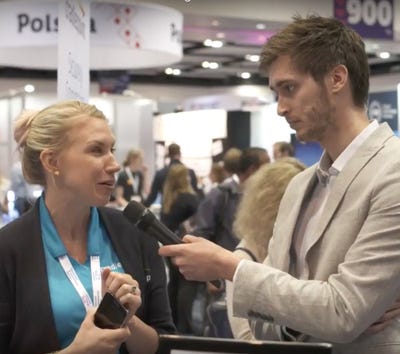Green Smart City Solutions are Abundant in Silo-Busting Gothenburg, SwedenGreen Smart City Solutions are Abundant in Silo-Busting Gothenburg, Sweden
In Gothenburg, Sweden, more so than in other burgeoning smart cities, silos are seen as the enemy. And no one knows this better than Ann-Louise Hohlfält, the city's urban development officer.
May 31, 2017

In Gothenburg more so than other burgeoning smart cities, silos are seen as the enemy.
Whether they exist within city administrations, service-providing companies, or between the public and private sectors, breaking down the walls that obstruct wider collaboration is a high priority when it comes to Gothenburg's urban development.
And no one knows this better than Ann-Louise Hohlfält, urban development officer for the City of Gothenburg — who was extremely keen to share some of the green and sustainable solutions that have sprung up in her city born of this cooperative approach, before she speaks at Smart to Future Cities in London this May.
What do you think has been Gothenburg's biggest “smart city” success to date?
“I would like to state that our greatest success is a strong political commitment for breaking the silos and work across the city administrations and municipal companies.
“That enables us to find new ways to work across sectoral and disciplines and hence foster smart city development. The city of Gothenburg has a strong belief that it takes systematic ways and strategies to get innovative thinking integrated in the whole organization, not only in separated 'smart city hubs' and other similar bodies.
“Good examples of smart city projects where Gothenburg is a front runner are ElectriCity: an exciting, cooperative venture bringing together industry, research and society in the development and testing of solutions for next-generation sustainable public transport.
“There's also Drive Me — the world’s biggest large-scale pilot project in autonomous driving — and Celsius — an EU-funded smart city project where Gothenburg is the lead partner, which deals with the development of district heating and district cooling.
“FED — fossil free energy districts — is another project we're very proud of.”
What IoT implementations are you current overseeing in Gothenburg that you're most excited by?
“The City of Gothenburg is currently running a project using IoT to measure air and water quality.
“The long term goal is to develop a GIS-based information platform for environment surveillance. In Gothenburg we have unique data from the 70s and onwards regarding air quality to help in decision making and planning. The demonstrator used in the project is one of the largest infrastructure project in Swedish history.”
What do you see as the defining characteristics of a smart city? How does Gothenburg embody these characteristics, and where would you like to see improvement?
“The characteristics of a smart city is the ability to work across silos and sector with complex structures and challenges using ICT as a tool.
“I do think that the city of Gothenburg has the ability to deal with complexity and are really good at initiating collaboration with business and academia when needed. An important area of improvement is to develop our ability to cross connect already known information in order to provide better knowledge for decision making in real time and forecasting scenarios.”
Which city do you think is the “smartest” in the world? How would you like Gothenburg to emulate this city?
“I think that is an impossible question since there are as many definition of a smart city as there are cities in the world.
“To some extent 'smart cities' is a technology push which the suppliers as the driving force. There are many examples of city solutions fixed to one specific supplier, but the 'smartest city' is the one that is open to the many and encourages a broad engagement to drive innovation.
“Gothenburg is far ahead of the game with individual initiatives, but we need to develop our modes of collaboration even more and always be prepared to change and be flexible.
“As a public body we need to get the culture of transition embodied in the organization. It can’t be a fixed goal and we need to have a structural learning.”
What roles do you think public and private sectors should play as a smart city is developed, and who should ultimately pay for these developments? How does the public-private relationship work for Gothenburg specifically?
“My belief is that the public sector needs to be an active partner and open up our processes in order to accommodate the strength and resources from business actors as well as civil society and the non-profit sector.
“In order to make new ways of collaboration work there has to be a win-win situation. From a Swedish perspective, I think the cities can be more proactive in communication the needs and main urban challenges to other sectors. Also, I think it essential that the public actors are the driving force to eventually influence and change the legal system if that is an obstacle to promote innovation and transition.
“Gothenburg has a range of different public-private relationship. It's worth mentioning how the city of Gothenburg has invested in long-term structures and platforms together with academia and the business sector. There are three of them with different profiles. The projects Drive Me and Electricity are good examples of how the city can provide the physical environment as a test arena for Volvo as a part of their research and development.”
About the Author
You May Also Like







